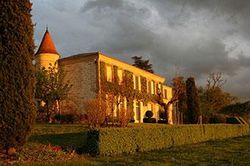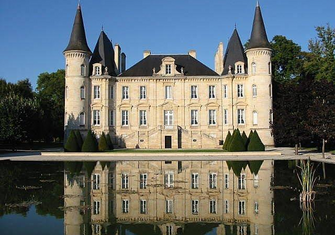
Christian Seely, MD of French insurance firm AXA, announced today the completion of a long-held goal to acquire a wine estate in Napa. AXA was an early adopter of the trend of large corporates to acquire fine wine estates in Bordeaux and other key wine growing regions. Their impressive portfolio includes Chateaux Pichon Longueville in Pomerol, Suduiraut in Sauternes and Pauillac’s Pichon Baron.
AXA created Domaine de L’Arlot in Burgundy’s Nuits St George in 1987 in conjunction with Jean Pierre Smet, famed for his previous sporting career as an international skier and yachtsman. They grew the original plot with the later acquisition of a ‘small slice’ of Romanée St Vivant and the estate is now farmed bio-dynamically.
The latest acquisition of Outpost Wines in Napa (11.3ha for an undisclosed sum) has been a target for some time. Seely commented on the natural synergy between their trans-Atlantic wine estates with the dominance of Cabernet Sauvignon in both the Medoc and Napa. They will retain the wine-maker Thomas Brown and former owner, Frank Dotzier, will continue to remain operationally involved.
The French Land Agency, SAFER, recently published figures on vineyard property and land sales in France in 2017, stating that the collective value of sales over the year had achieved a 25-year high. The total value of all vineyard related transactions was £1.25bn, a 59.9% increase on the 2016 total. This represented 9,600 acquisitions and encompassed 16,900ha of land under vines. The significant year on year growth was largely influenced by a few key acquisitions which represented at least 31% of value overall.
Burgundy and the Loire saw the highest number of individual transactions, whilst Champagne achieved the largest increase in land value with a total growth of 55% at more than €38million.

Bordeaux’s vineyard sales increased from 703 in 2016 to 723 in 2017, with 3% of the territory changing hands (around 3,000 hectare). There is some uncertainty on overall value of the Bordeaux sales due to the confidential nature of some of the key acquisitions, such as St Emilion’s Chateau Troplong Mondot (the value of which was estimated at €6million per ha.). SAFER stated a growth in value year on year from €249million to €277million. We believe this is largely underestimated.
It is noted that buyers from within Bordeaux are mostly focused on buying more vines, whereas external buyers are keen to buy vineyards with statement properties. Chinese buyers made approximately 16 acquisitions and British buyers were responsible for about 40% of the international acquisitions of French agricultural land in 2017. The number of British acquisitions has declined slightly since the UK Brexit referendum.
AVERAGE LAND VALUES – BORDEAUX LEFT BANK:
- Pessac Leognan: €450,000 – €600,000 per ha.
- Sauternes: €30,000 per ha.
- AOC Haut Medoc: €80,000 per ha.
- Margaux €1.2million per ha.
- St Julien: €1.2million per ha.
- Pauillac: €2million per ha.
- Pauillac Grand Cru Cote d’Or – €6million per ha. – increase 18% since 2016
- St Estephe: €450,000 per ha. – large range from €1million per ha. for prime gravel plots to €350,000 per ha. for coolest clay soils
AVERAGE LAND VALUES – BORDEAUX RIGHT BANK:
- St Emilion range from €200,000 to €2.6million per ha.
- Pomerol €900,000 to €4.4million per ha.
Acquisition is one thing, making it work another and time will tell with AXA’s Napa purchase. Retaining the previous family interest and winemaker is a strong step towards building on existing quality and valuable relationships.
The Rhone’s most famous wine producer, Maison Guigal acquired the Chateau Neuf du Pape Domaine de Nalys in 2017, 50 hectares located near Henri Bonneau and Chateau Rayas. Philippe Guigal claims, in an interview this week, that they have big plans for the previously underperforming estate and the release of their first vintage planned for the end of 2018 is a landmark moment.
Fine wine linked land and property investment is certainly reaping dividends driven by increasing consumer demand and a buoyant fine wine market.

